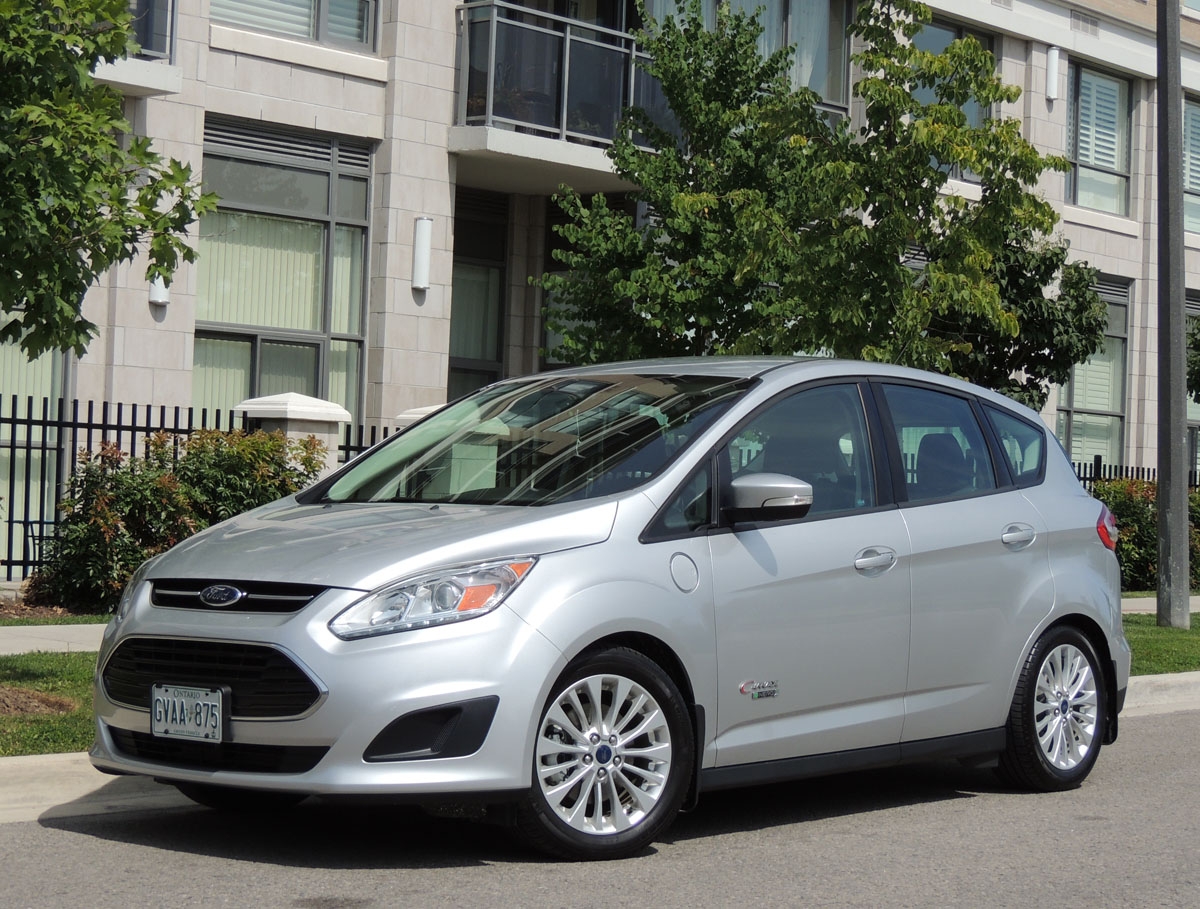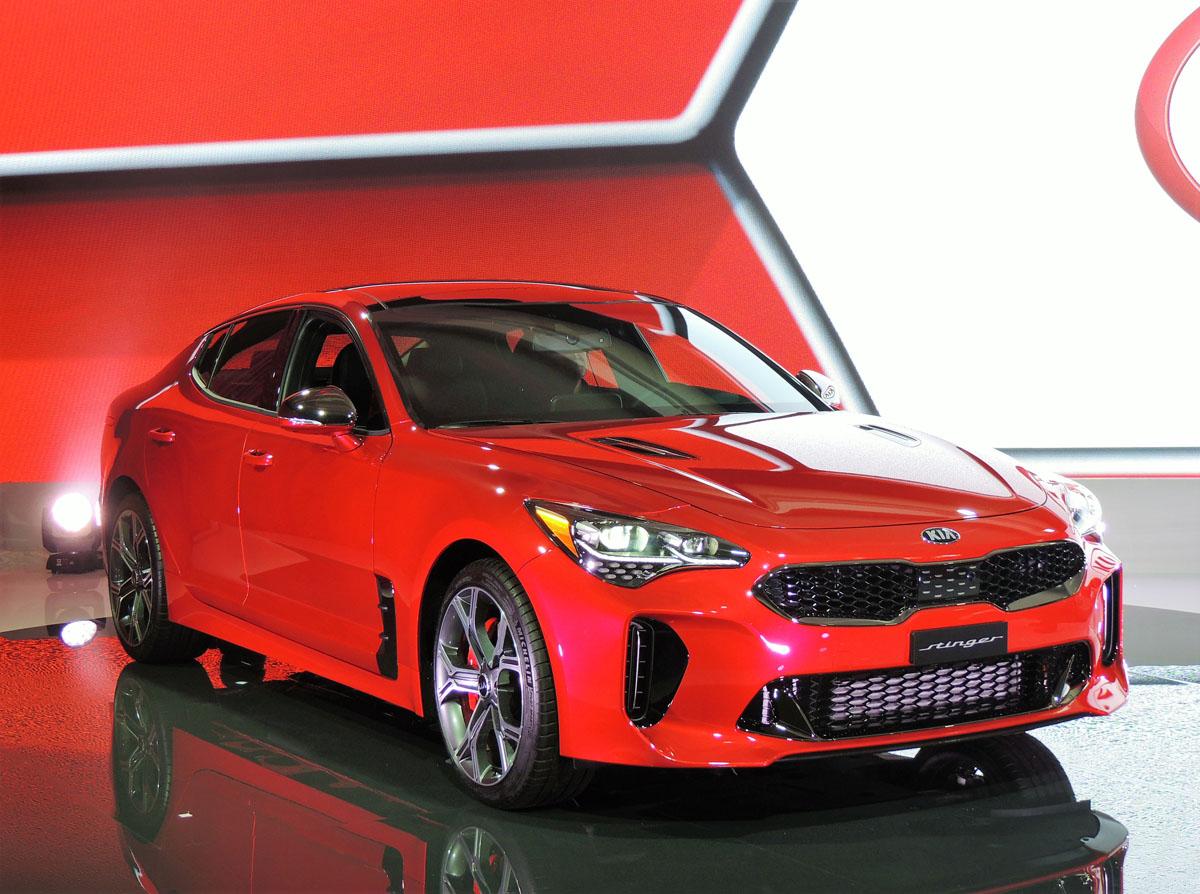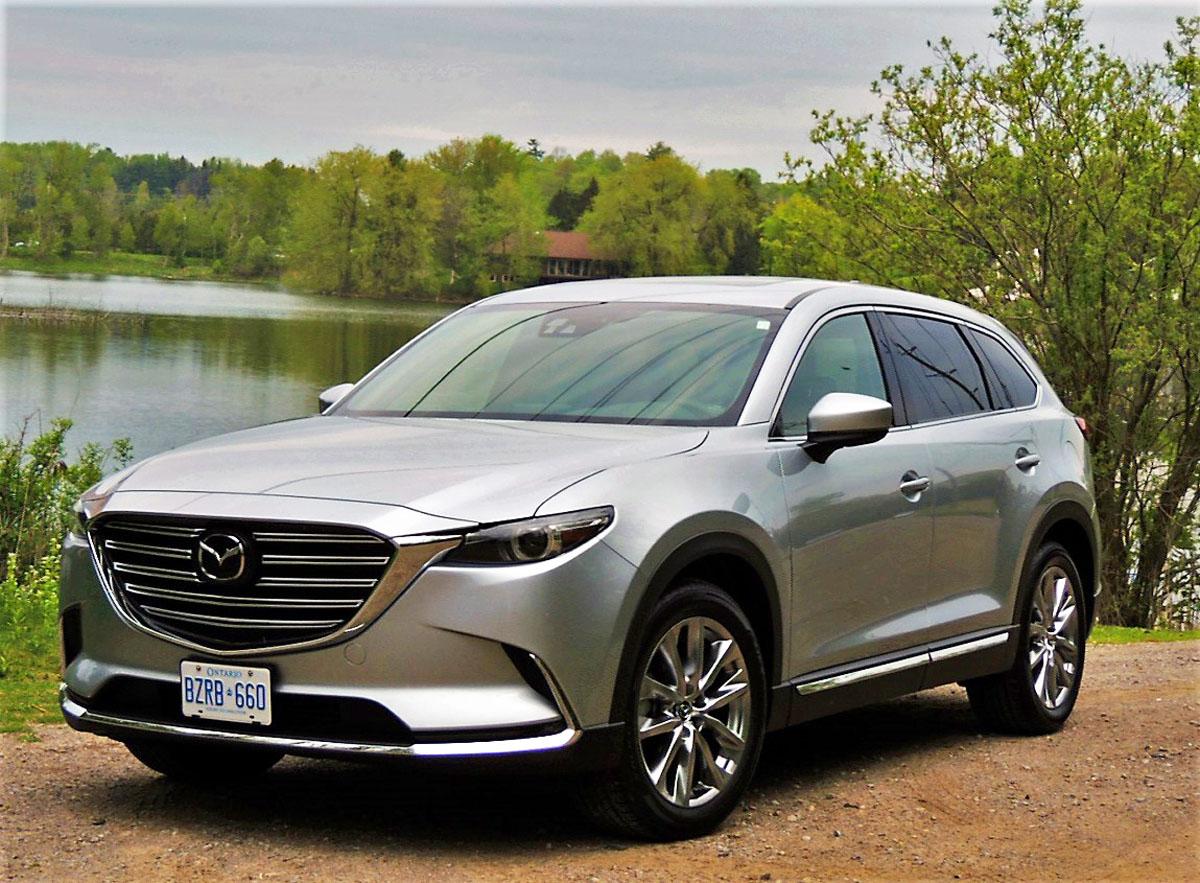
Ford C-Max shows why it pays to plug in
Photos by Neil Moore / Feature photo: Ford C-Max is available in both hybrid and plug-in hybrid versions. Shown here is the latter – the 2017 Energi in SE trim.
What’s in a name? Ford is one of several automakers that still uses real words to badge its cars. Mustang the wild horse, Taurus the bull – a sign of the zodiac, and Focus, well, an ability that our species is beginning to lose.
Like the vestigial tail.
I’m not sure about the C-Max. Its name isn’t exactly screaming for attention, but neither is its styling, with a rounded tall-hatchback shape that isn’t unattractive, but just kind of blends in.
If you want more panache, there are plenty of other options, like Mazda CX-3. But C-Max isn’t competing in that space, and CX-3 doesn’t sip petrol like the Ford.
Indeed, this compact five-door is largely about green motoring. As are many electrified vehicles like Chevy Volt, Kia Niro, Hyundai Ioniq, and the multiple flavours of Prius.

Ford has other rides, like Focus and Fusion, that use electricity. But C-Max hits that sweet spot where practicality meets thrift, giving buyers a vehicle with a reasonable sticker price, along with superb fuel efficiency and abundant room for a family of four. Five in a pinch.
On that latter point, I’ve found that many compacts come up short on leg room in the rear quarters. Not C-Max, which offers plenty of space to stretch out, not to mention loads of head room with its high roofline.
There are four C-Max models in Canada. Hybrid SE and Titanium start at $27,328 and $31,958. C-Max Energi, the plug-in version, is priced at $29,828 for the SE and $34,458 for the Titanium. Destination and Delivery are $1,750.
Mine was an SE, which was amped up with $2,425 in options, the main one being the $1,800 Equipment Group 402A that includes driver assist, power liftgate, navigation and reverse sensors.
Common to all vehicles is a 2.0-litre Atkinson-cycle four cylinder that produces 141 hp and 129 lb/ft of torque. In the hybrid, this engine works with an electric motor and 1.4 kWh lithium-ion battery, routing power seamlessly back and forth with no bother from the driver.
The Energi is a little more potent, with its larger electric motor and 7.6 kWh lithium-ion battery that produces 117 hp and 118 lb/ft of torque. Combined with the gas engine, net system output is 188 hp. Don’t ask me to do the math.
Punch the pedal, and you get an instant shot from the electric motor until the gas engine builds up steam. Acceleration isn’t neck-snapping, but there’s enough pep for passing, and for the cut and thrust of city traffic.
Fuel economy in gas-only mode is nearly identical for both vehicles: 5.9 L/100km for the hybrid, 6.0 L/100 for the plug-in. The difference is likely due to the PHEV’s larger battery pack, making it 117 kg heavier.
Unique to the Energi is a second fuel number. NRCan uses some tricky calculations for an “equivalent per 100 kilometres” when dealing with EVs and plug-ins (PHEVs). The C-Max posts 2.5 Le/100km.
Indeed, it’s this ability to drive petrol-free that piques my interest in the Energi. No PHEV can match the range of today’s pure EVs, which are now topping 200 kilometers, and up to a whopping 383 when you consider Chevy Bolt.
By comparison, the (up to) 32 km you get with C-Max Energi may seem paltry, but it’s ideal for running errands: groceries, kids to soccer, etc. Or for covering part of your commute. And if you plug in regularly, as I did during my week of testing, visits to the gas pump become few and far between. I scored an average 3.0 L/100 km, driving mostly on electrons.
Which meant I had a mere quarter tank to fill before returning the vehicle. A pleasant surprise following the price hikes after Hurricane Harvey.
The advantage of a PHEV battery is its quicker recharge time. I’ve tried to recharge some full EVs on my 110-volt garage outlet, and it has taken nearly a full day. The C-Max juices up from empty overnight, or in about seven hours.
The smart move, however, is to purchase a 240-volt home charging station, which cuts that by nearly two thirds.
In either case, the C-Max has a handy way of letting you know charging status. Circling the external charging port is an LED that illuminates by quadrants as you recharge. A full circle and you’re ready to roll.
Alternatively there’s an app for this – no surprise here. The MyFord mobile app allows you to monitor levels and schedule charging, find public charging stations – and even locate your vehicle. The latter is a bonus when you’re driving one of these in “Ingot Silver,” which is about as discreet as the styling.

As you’d expect, there’s no shortage of tech to track energy use. C-Max employs SmartGauge with EcoGuide to keep a watchful eye on battery, fuel and your right foot.
Flip through displays to the right of the speedo, and you’ll find a “coach” screen that scores your acceleration, braking and cruising. Fuel history reinforces the message.
The most intuitive of these is the “efficiency leaves” screen where leaves grow or drop from your virtual tree, depending on driving habits. Brake early and gently, accelerate gradually and keep your speed within the limit, and you’ll be rewarded with abundant foliage.
Drive with a lead foot, and that lush greenery soon turns into Charlie Brown’s Christmas tree.
Getting the best from your C-Max requires some forethought. For example, when I’m doing short trips around town, I put it in “EV Now” mode to run mostly on plug-in power. On the highway, I may use “EV Later” to save the battery for heavier traffic where it makes more of a difference. This mode is also useful when warming up the car, which is better done when burning petrol.
Where C-Max could up its game is in the boot. Cargo space is a modest 545 litres behind the second row, growing to 1,211 litres with seats folded (compared to 694 and 1,489 in the hybrid). This would be fine if seats folded flat, which Hyundai – a relative newcomer to electrification – manages to accomplish in its Ioniq plug-in. Ford should find a way to locate its PHEV battery under C-Max’s rear bench.
The SE cabin, overall, has abundant soft-touch surfaces, and a nice grippy fabric on its seats. It’s not a premium interior, which one might expect in a $30K vehicle, but keep in mind that much of the dough is being spent on its plug-in hybrid technology. And in Ontario, this vehicle is eligible for up to a $7,730 provincial rebate.
With gas prices soaring, and likely to continue inflicting pain in the long term, it’s making ever more sense to consider a plug-in ride. C-Max is one of several in a growing segment, and is worth a closer look if you’re still not comfortable with a fully-electric vehicle, but want the best of both worlds.

SNAPSHOT: Ford C-Max Energi 2017
BODY STYLE: compact hatchback
DRIVE METHOD: front-engine, front-wheel-drive
POWERTRAIN: (as tested) 2.0-litre Atkinson-cycle four cylinder (141 hp and 129 lb/ft of torque) with electric motor and 7.6 kWh lithium-ion battery. Net system output 188 hp.
CARGO: 545 litres behind rear seats, 1,211 with seats folded
FUEL ECONOMY: 6.0L/100km (city/hwy), 2.5 Le/100km
PRICING: SE Energi – $29,828; Titanium Energi – $34,458; Destination and Delivery – $1,750
See website for detailed option pricing. Taxes extra.
WEBSITE: www.ford.ca









